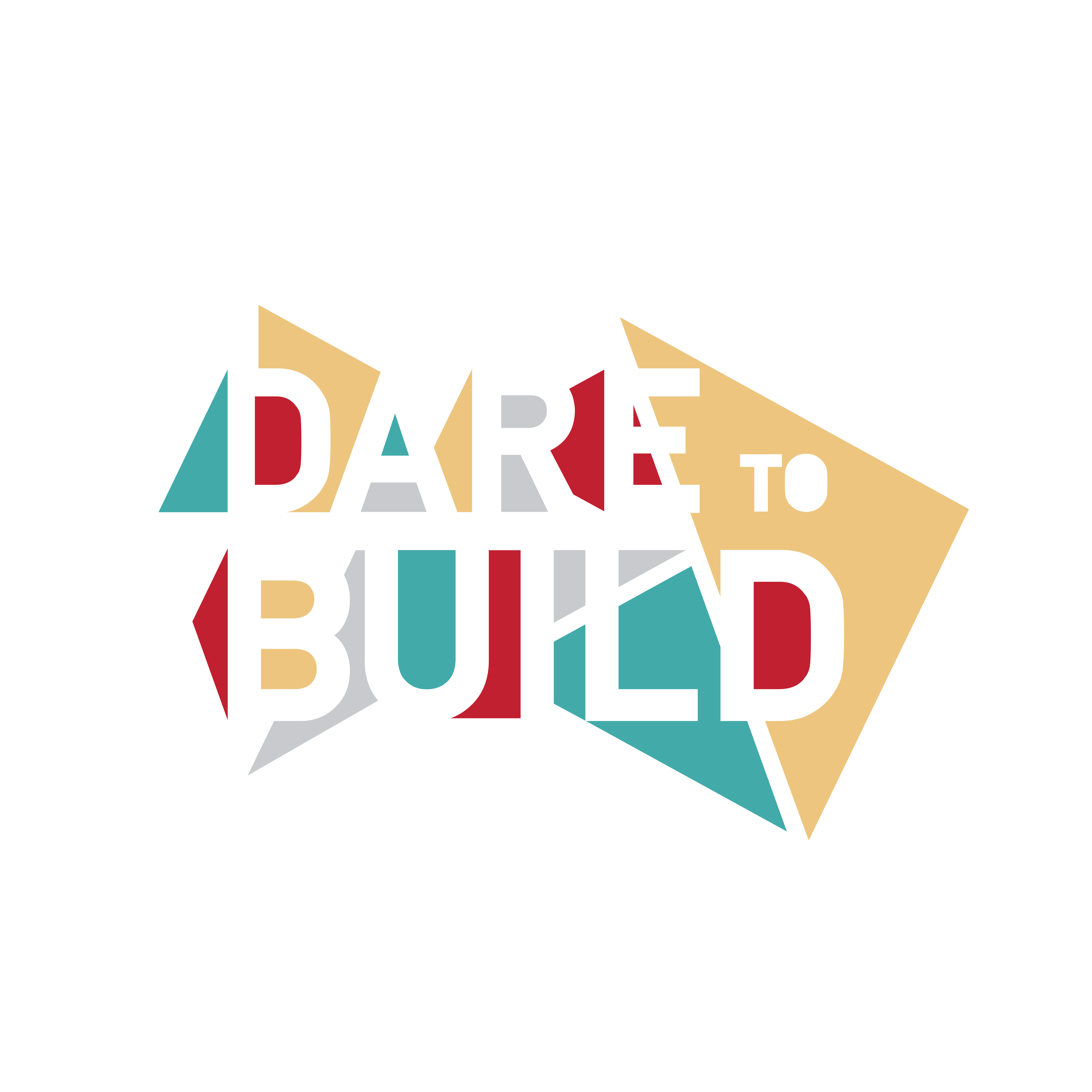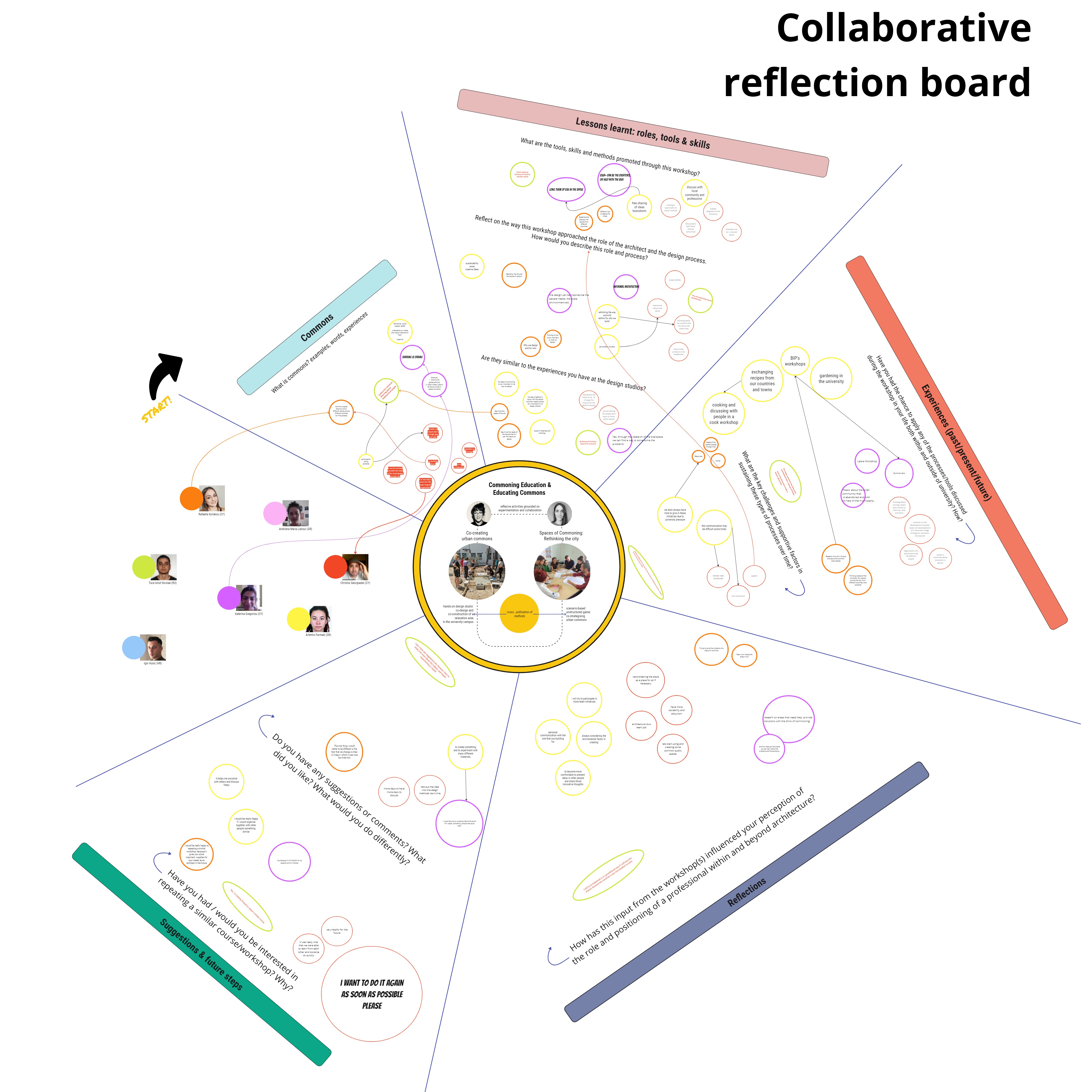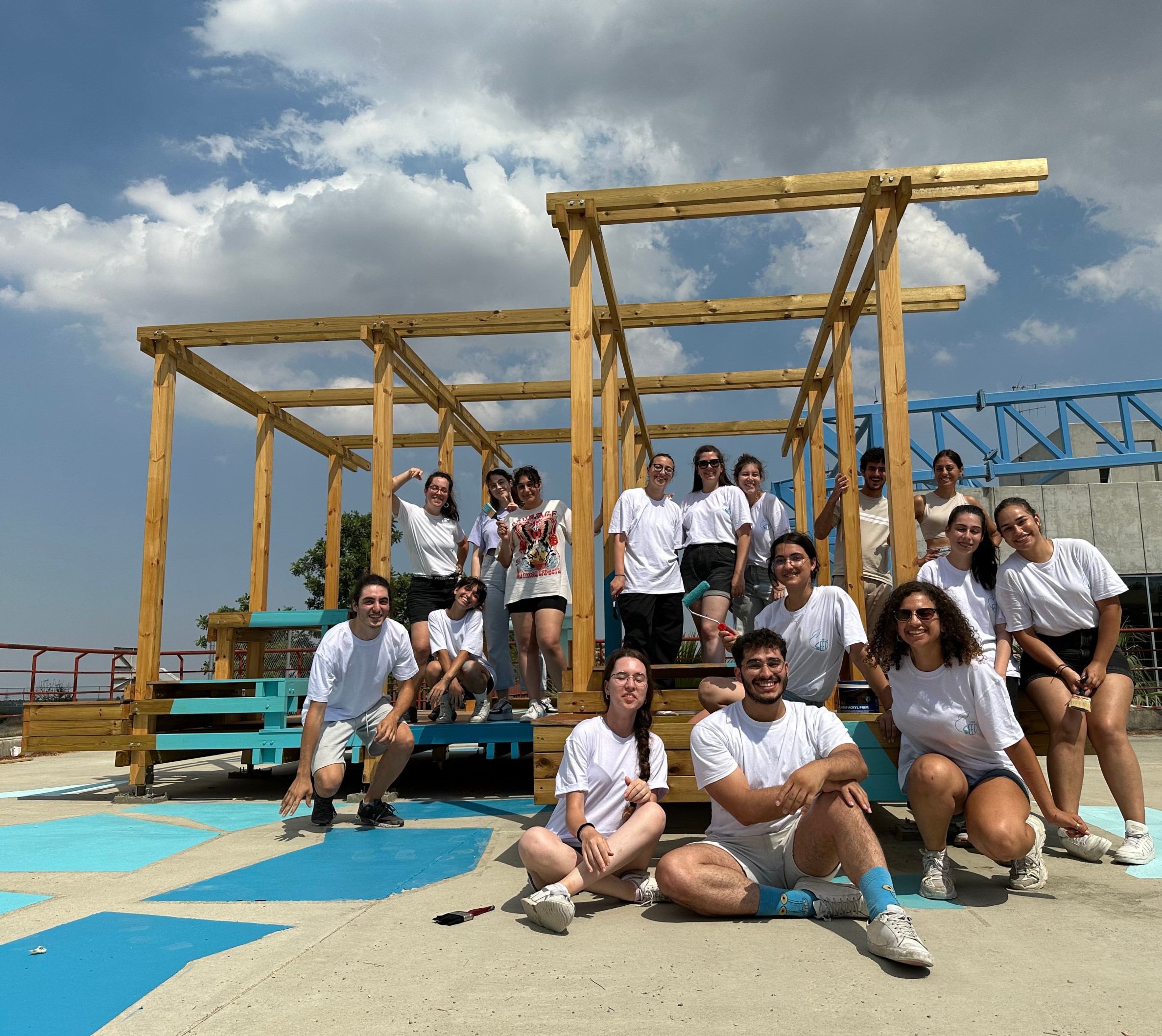
DARE to Build, Chalmers University of Technology
Created on 04-07-2023
'DARE to build' is a 5–week (1 week of design – 4 weeks of construction) elective summer course offered at the Department of Architecture and Civil Engineering at Chalmers University of Technology in Sweden. The course caters for master-level students from 5 different master programmes offered at the Architecture and Civil Engineering Department. Through a practice-based approach and a subsequent exposure to real-world problems, “DARE to build” aims to prove that “real change can be simultaneously made and learned (Brandão et al., 2021b, 2021a). The goal of this course is to address the increasing need for effective multidisciplinary teams in the fields of architecture, engineering and construction (AEC) in order to tackle the ever-growing complexity of real-world problems (Mcglohn et al., 2014), and the pervading lack of a strong pedagogical framework that responds effectively to this challenge. The two main foci of the “DARE to build” pedagogical model are: (1) to train students in interdisciplinary communication, to cultivate empathy and appreciation for the contributions of each discipline, to sharpen collaborative skills (Tran et al., 2012) and (2) to expose students in practice-based, real-world design projects, through a problem-and-project-based learning (PPBL) approach, within a multi-stakeholder learning environment (Wiek et al., 2014). This multi-stakeholder environment is situated in the municipality of Gothenburg and involves different branches and services (Stadsbyggnadskontoret, Park och Naturförvaltningen), local/regional housing companies (Familjebostäder, Bostadsbolaget), professionals/collectives operating within the AEC fields (ON/OFF Berlin, COWI), and local residents and their associations (Hyresgästföreningen, Tidsnätverket i Bergsjön).
Design & Build through CDIO
By showcasing that “building, making and designing are intrinsic to each other” (Stonorov et al., 2018, p. 1), students put the theory acquired into practice and reflect on the implications of their design decisions. Subsequently they reflect on their role as AEC professionals, in relation to local and global sustainability; from assessing feasibility within a set timeframe to the intangible qualities generated or channelled through design decisions in specific contexts. This hands-on learning environment applies the CDIO framework (conceive, design, implement, operate, http://www.cdio.org/), an educational framework developed in the MIT, with a particular focus on the “implementation” part. CDIO has been developed in recent years as a reforming tool for engineering education, and is centred on three main goals: (1) to acquire a thorough knowledge of technical fundamentals, (2) to sharpen leadership and initiative-taking skills, and (3) to become aware of the important role research and technological advances can play in design decisions (Crawley et al., 2014). Therefore, design and construction, combined with CDIO, offer a comprehensive experience that enables future professionals to assume a knowledgeable and confident role within the AEC sector.
Course structure
“DARE to build” projects take place during the autumn semester along with the “Design and Planning for Social Inclusion” (DPSI) studio. Students work closely with the local stakeholders throughout the semester and on completion of the studio, one project is selected to become the “DARE to build” project of the year, based on (1) stakeholder interest and funding capacity, (2) pedagogical opportunities and the (3) feasibility of construction. During the intervening months, the project is further developed, primarily by faculty, with occasional inputs from the original team of DPSI students and support from professionals with expertise relevant to a particular project. The purpose of this further development of the initial project is to establish the guidelines for the 1-week design process carried out within “DARE to build”.
During the building phase, the group of students is usually joined by a team of 10-15 local (whenever possible) summer workers, aged between 16-21 years old, employed by the stakeholders (either by the Municipality of Gothenburg or by a local housing company). The aim of this collaboration is twofold - to have a substantial amount of workforce on site and to create a working environment where students are simultaneously learning and teaching, therefore enhancing their sense of responsibility. “DARE to build” has also collaborated - in pre-pandemic times - with Rice University in Texas, so 10 to 15 of their engineering students joined the course as a summer educational experience abroad.
The timeline for each edition of the “DARE to build” project evolution can be schematically represented through the CDIO methodology, which becomes the backbone of the programme (adapted from the courses’ syllabi):
Conceive: Developed through a participatory process within the design studio “Design and Planning for Social Inclusion”, in the Autumn.
Design: (1) Teaching staff defines design guidelines and materials, (2) student participants detail and redesign some elements of the original project, as well as create schedules, building site logistical plans, budget logs, etc.
Implement: The actual construction of the building is planned and executed. All the necessary building documentation is produced in order to sustain an informed and efficient building process.
Operate: The completed built project is handed over to the stakeholders and local community. All the necessary final documentation for the operability of the project is produced and completed (such as-built drawings, etc.).
In both the design and construction process, students take on different responsibilities on a daily basis, in the form of different roles: project manager, site supervisor, communications officer, and food & fika (=coffee break) gurus. Through detailed documentation, each team reports on everything related to the project’s progress, the needs and potential material deficits on to the next day’s team. Cooking, as well as eating and drinking together, works as an important and an effective team-bonding activity.
Learning Outcomes
The learning outcomes are divided into three different sets to fit with the overall vision of “DARE to Build” (adapted from the course syllabi):
Knowledge and understanding: To identify and explain a project’s life cycle, relate applied architectural design to sustainability and to describe different approaches to sustainable design.
Abilities and skills: To be able to implement co-creation methods, design and assess concrete solutions, to visualise and communicate proposals, to apply previously gained knowledge to real-world projects, critically review architectural/technical solutions, and to work in multidisciplinary teams.
Assessment and attitude: To be able to elaborate different proposals on a scientific and value-based argumentation, to combine knowledge from different disciplines, to consider and review conditions for effective teamwork, to further develop critical thinking on professional roles.
The context of operations: Miljonprogrammet
The context in which “DARE to Build” operates is the so-called “Million Homes Programme” areas (MHP, in Swedish: Miljonprogrammet) of suburban Gothenburg. The MHP was an ambitious state-subsidised response to the rapidly growing need for cheap, high-quality housing in the post-war period. The aim was to provide one million dwellings within a decade (1965-1974), an endeavour anchored on the firm belief that intensified housing production would be relevant and necessary in the future (Baeten et al., 2017; Hall & Vidén, 2005). During the peak years of the Swedish welfare state, as this period is often described, public housing companies, with help from private contractors, built dwellings that targeted any potential home-seeker, regardless of income or class. In order to avoid suburban living and segregation, rental subsidies were granted on the basis of income and number of children, so that, in theory, everyone could have access to modern housing and full of state-of-the-art amenities (Places for People - Gothenburg, 1971).
The long-term perspective of MHP also meant profound alterations in the urban landscape; inner city homes in poor condition were demolished and entire new satellite districts were constructed from scratch triggering “the largest wave of housing displacement in Sweden’s history, albeit firmly grounded in a social-democratic conviction of social betterment for all” (Baeten et al., 2017, p. 637) . However, when this economic growth came to an abrupt halt due to the oil crisis of the 1970s, what used to be an attractive and modern residential area became second-class housing, shunned by the majority of Swedish citizens looking for a house. Instead, they became an affordable option for the growing number of immigrants arriving in Sweden between 1980 and 2000, resulting in a high level of segregation in Swedish cities. (Baeten et al., 2017).
Nowadays, the MHP areas are home to multi-cultural, mostly low income, immigrant and refugee communities. Media narratives of recent decades have systematically racialised, stigmatised and demonised the suburbs and portrayed them as cradles of criminal activity and delinquency, laying the groundwork for an increasingly militarised discourse (Thapar-Björkert et al., 2019). The withdrawal of the welfare state from these areas is manifested through the poor maintenance of the housing stock and the surrounding public places and the diminishing public facilities (healthcare centres, marketplaces, libraries, etc.) to name a few. Public discourse, best reflected in the media, often individualizes the problems of "culturally different" inhabitants, which subsequently "justifies" people's unwillingness to work due to the "highly insecure" environment.
In recent years, the gradual (neo)liberalisation of the Swedish housing regime has provided room for yet another wave of displacement, leaving MHP area residents with little to no housing alternatives. The public housing companies that own MHP stock have started to offer their stock to potential private investors through large scale renovations that, paired with legal reforms, allow private companies to reject rent control. As a result, MHP areas are entering a phase of brutal gentrification (Baeten et al., 2017).
Reflections
Within such a sensitive and highly complex context, both “DARE to Build”, and “Design & Planning for Social Inclusion” aspire to make Chalmers University of Technology an influential local actor and spatial agent within the shifting landscape of the MHP areas, thus highlighting the overall relevance of academic institutions as strong, multi-faceted and direct connections with the “real-world”.
Even though participation and co-creation methodologies are strong in all “Design and Planning for Social Inclusion” projects, “DARE to Build” has still some ground to cover. In the critical months that follow the selection of the project and up to the first week of design phase, a project may change direction completely in order to fit the pedagogical and feasibility criteria. This fragmented participation and involvement, especially of those with less power within the stakeholder hierarchy, risks leading to interventions in which local residents have no sense of ownership or pride, especially in a context where interventions from outsiders, or from the top down, are greeted with increased suspicion and distrust.
Overall “DARE to build” is a relevant case of context-based education which can inform future similar activities aimed at integration education in the community as an instrument to promote sustainable development.
Relevant “DARE to build” projects
Gärdsåsmosse uteklassrum: An outdoor classroom in Bergsjön conceptualised through a post-humanist perspective and constructed on the principles of biomimicry, and with the use of almost exclusively natural materials.
Visit: https://www.chalmers.se/sv/institutioner/ace/nyheter/Sidor/Nu-kan-undervisningen-dra-at-skogen.aspx
https://www.mynewsdesk.com/se/cowi/pressreleases/cowi-hjaelpte-goeteborgs-stad-foervandla-moerk-park-till-en-plats-att-ha-picknick-i-2920358
Parkourius: A parkour playground for children and teens of the Merkuriusgatan neighbourhood in Bergsjön. A wooden construction that employs child-friendly design.
Visit: https://www.sto-stiftung.de/de/content-detail_112001.html https://www.mynewsdesk.com/se/familjebostader-goteborg-se/pressreleases/snart-invigs-bergsjoens-nya-parkourpark-3111682
E.Roussou (ESR9)
Read more
->



